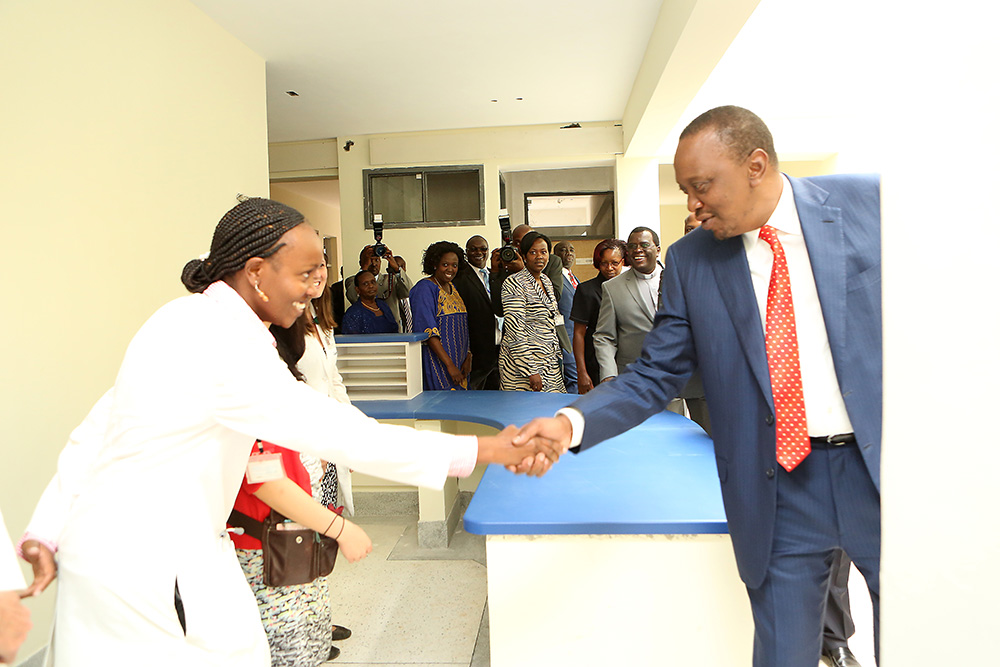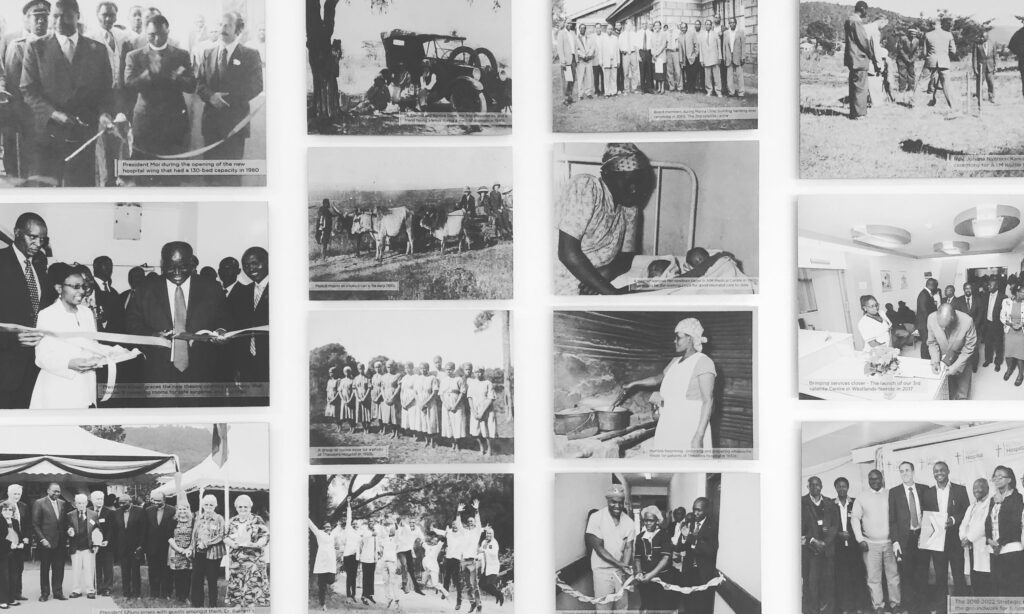
On History

The hospital is in the middle of several renovations and hung a batch a pictures that truly give a good sense of what medical mission work actually looks like in Kijabe. There is a series of improbable, serendipitous events leading back decades, that when viewed together, cannot be anything but God’s work. Arianna and I have joined a long stream of faithful people who have served in Kenya. Six years seems like a long time to us but we are acutely aware that our work will always be a season, then we will hand off to the people called after us. We are very much a part of something much greater than ourselves.
In these pictures, I see the threads of past, present, and future woven together. Below are several stories that I think you’ll love.
Story #1
Dr. Arthur Barnett breaking ground for the hospital building (top right). I think how completely improbable that we would have a friendship with his family, not through our time in Kijabe, but because of a year spent in Taiwan 16 years ago.
In 2003 I was waiting tables and writing sad country songs on the back of napkins. Both because of the unique opportunity and because she was worried about my sanity, Arianna applied for a fellowship that took us to Asia. We met Lauren, who married Geoff, who happened to be Dr. Barnett’s grandson. Not only this, Dr. Barnett lived with Lauren and Geoff for his last few years of his life on earth.
Dr. Barnett had a fantastic collection of medium-format pictures, Lauren and Geoff sent me high-resolution scans, and now their piece of history is hanging on the wall of Kijabe Hospital. How amazing is that?
Story #2
Dr. Charles Fraley opening the hospital in its current form in 1980 with President Moi (top left). Long before he was president, Daniel Arap Moi was employed, educated, and came to faith through friendship with the Barnett family. Moi kept power for many decades and maintaining a harsh regime, but he was also also a man of faith, as I heard in a recent conversation with a missionary who knew him well.
Dr. Fraley was an AIM missionary in Kenya for several decades, but before that, he moved from California to Alabama to serve as a small-town doctor in an all-Black community in the early 1960’s smack in the middle of civil rights.
Dr. Fraley crossed multiple human boundaries and put himself at risk in multiple ways for the sake of love. Seriously amazing.
Story #3
Bottom, one over from right, a picture I took, of Dr. Ken Muma cutting the ribbon for the Naivasha surgical suite.
Ken came to Kijabe because of the same person who influenced Arianna and me, Pediatric surgeon Erik Hansen.
Arianna worked with Erik during UAB residency but we really got to know his family when they were preparing to fly to Kenya as part of the Samaritan’s Purse Post Residency program.
Erik, Amanda, and their four kids showed up at our house in Birmingham for family pictures, then we talked for 6 hours. We kept in touch and a year later, when Arianna was at a low point in her medical training. she wrote Erik and asked if we could visit Kenya and volunteer for several weeks to reset our dreams and purpose. We loved Kijabe, many thousand pieces fell into place for us to return, and the rest is history.
As for Dr. Muma, after he finished training, he became head of the pediatric surgery program, C.E.O. of hospital. He is also good friend, and instigator of many of our best Kenyan adventures.
Could any of this be if we hadn’t spent an evening with the Hansens in Birmingham a decade ago? Mungu tu anajua – God only knows. But I find it far too amazing to simply be chance.
Story #4
I want to share one other story from history. If you’re not familiar with Howard Thurman, he’s best known as Dr. Martin Luther King’s spiritual mentor. Legend has it that Dr. King carried two books with him at all times, a Bible and a copy of Thurman’s book Jesus and the Disinherited.
I have been doing some reading of Thurman’s other work and came across this brilliant description of medical work as part of the redeeming process of God. If I could offer a single summary of what our lives are about, and what the work of Kijabe looks like, it’s this:
“I think that the ministry of healing, through all of the uses to which forces of nature are put in response to the creative wooing and urgencies of the mind of man and the desperation of his spirit, all of these are part of the redemptive process by which the God of the lost is seeking his own. All of the things that we do to help in the rehabilitation of children, all the things that we are working on in helping to restructure and helping to release creative forces that can restructure disturbances of the mind and the emotions—all of these are part of the redeeming process of God!”
“I think that the work is holy, and those who with their training and their minds are vehicles for that kind of redemption should be men and women of great reverence and great spiritual discernment and awareness. And the illusion that these processes are secular processes, the illusion that these processes are so objective, so scientific that they are not involved in the deeply moving spiritual thing with which life is imbued is perhaps the most tragic delusion of modern man.“
“What can happen when one with discipline and long-brooding with the mind and exposure to the need can have that whole process illumined by a recognition that God is at work in him? Every hospital, every clinic, every consultation, consulting room becomes an altar where the love of God burns for the redemption of his children.“
This idea shows in the historic Kijabe pictures – every person serving as a vehicle for redemption, and every building serving as an altar for God’s love.
Of course, this doesn’t obscure the current reality – today is hard! We are tired, our teams are worn down, this year has been brutal. But always, God is good and is doing good in and around us, before and after us.